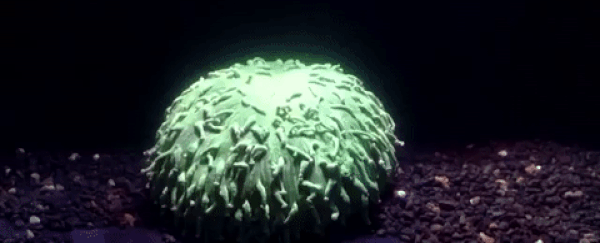In a world where 93 percent of the Great Barrier Reef is now damaged, and some 12,000 square kilometres of coral from Hawaii to the Indian Ocean is expected to be destroyed by the end of the year, we've got a big, big problem when it comes to coral bleaching.
And now, for the first time, scientists have filmed coral bleaching in action, and it's more rapid and severe than anyone could have predicted.
For the uninitiated, coral bleaching describes how coral lose their colour in response to environmental stresses, such as rising temperatures or pollution.
The corals themselves don't produce the pigmentt hat gives them their vivid colours - that's thanks to tiny, colourful algae that live in the coral tissue and provide invaluable nutrients in return for a safe space to live and breed.
This kind of equally beneficial - or symbiotic - relationship between coral and algae suits both parties perfectly, but when the going gets tough, the coral will savagely evict the algae to concentrate on its own survival, turning ghostly white in the process.
If conditions don't improve fast enough so new algae can move in, the coral will die.
"What's really interesting is just how quickly and violently the coral forcefully evicted its resident symbionts," says Brett Lewis from the Queensland University of Technology in Australia, whose team has been observing bleaching in the coral species, Heliofungia actiniformis.
Having placed a number of H. actiniformis corals and Symbiodinium algae in a controlled environment, the researchers were able to observe and record their response to rising temperatures.
Over the first 12 hours, the team raised the water temperature from 26 to 32 degrees Celsius (78 to 89 degrees Fahrenheit), and kept it at that level for eight days. As you can see in the footage below, the corals responded by basically farting their colour out in a matter of hours.

"The H. actiniformis began ejecting the symbionts within the first 2 hours of us raising the water temperature of the system," says Lewis.
"Our H. actiniformis used a pulsed inflation to expel Symbiodinium over time - inflating their bodies to as much as 340 percent of their normal size before suddenly and violently contracting and ejecting Symbiodinium through their oral openings over the four to eight-day duration of the experiments," adds one of the team, Luke Nothdurft.
If that's not unsettling enough, the researchers say they chose H. actiniformis because it's actually one of the most resilient species of coral in the Great Barrier Reef.
Growing to about 20 cm in diameter and 7 cm high, (7.8 by 2.7 inches), H. actiniformis is a solitary species of mushroom coral that feeds on excess sugars produced by its Symbiodinium residents, while also catching zooplankton from the surrounding waters with those creepy tentacles.
Its colours can range from a dark brown or velvety green, to stunning, almost iridescent yellows, pinks, purples, and reds. Seriously, this thing looks like something out of an underwater fairytale.
Despite being classified as vulnerable to extinction by the ICUN red list, previous studies have noted that H. actiniformis has an abnormally high level of resilience to thermal stress, and Lewis and his team now think this could be because of its incredibly quick response.
"Our observations suggest this resilience could be due to the rapid expulsion of the coral's algal symbionts during thermal stress, and could very well increase H. actiniformis's chance of survival during abnormally high sea temperatures," he says.
Other than gaining a better understanding of how these corals behave, there isn't a whole lot of good news here.
What we now know is that one of the most resilient species of coral in the Great Barrier Reef is only better at surviving the effects of global warming because it's willing to start sacrificing vital nutrients earlier than other species, and that's a pretty dire concept.
All we can do is hope that the more research that's done to help us better understand what our coral reefs are up against, the better chance we have of government policies changing to give the 7 percent of the Barrier Reef that's managed to avoid coral bleaching a fighting chance.
The research has been published in Coral Reefs.
